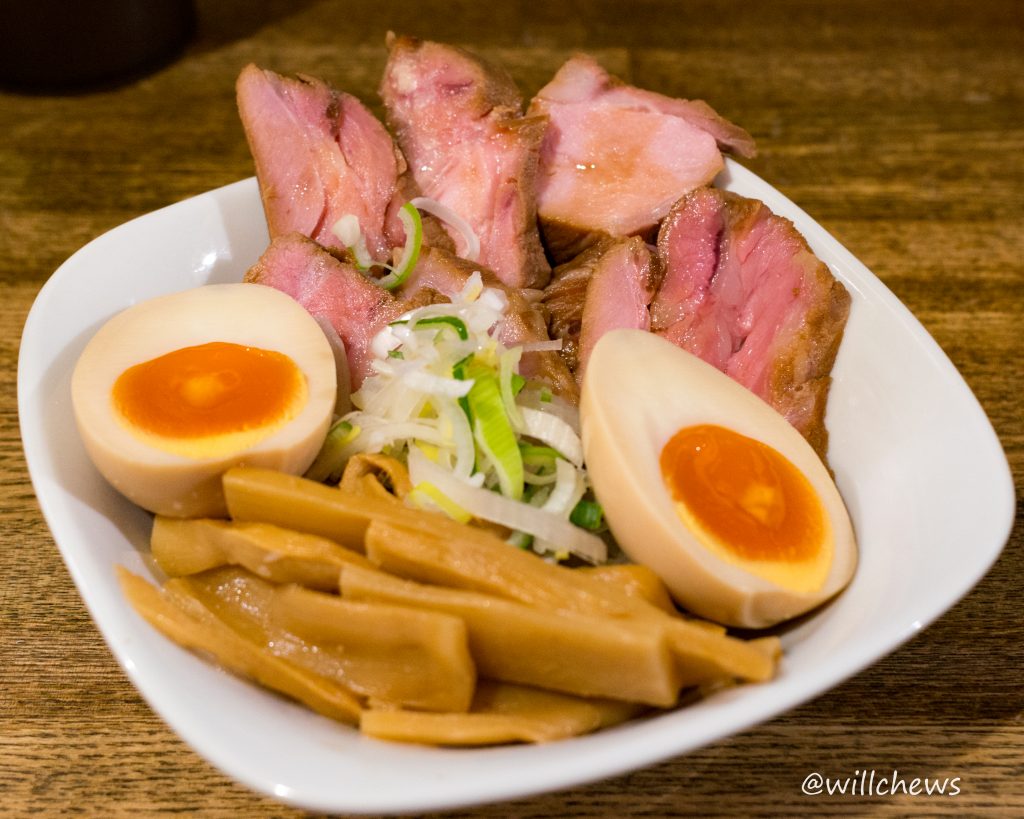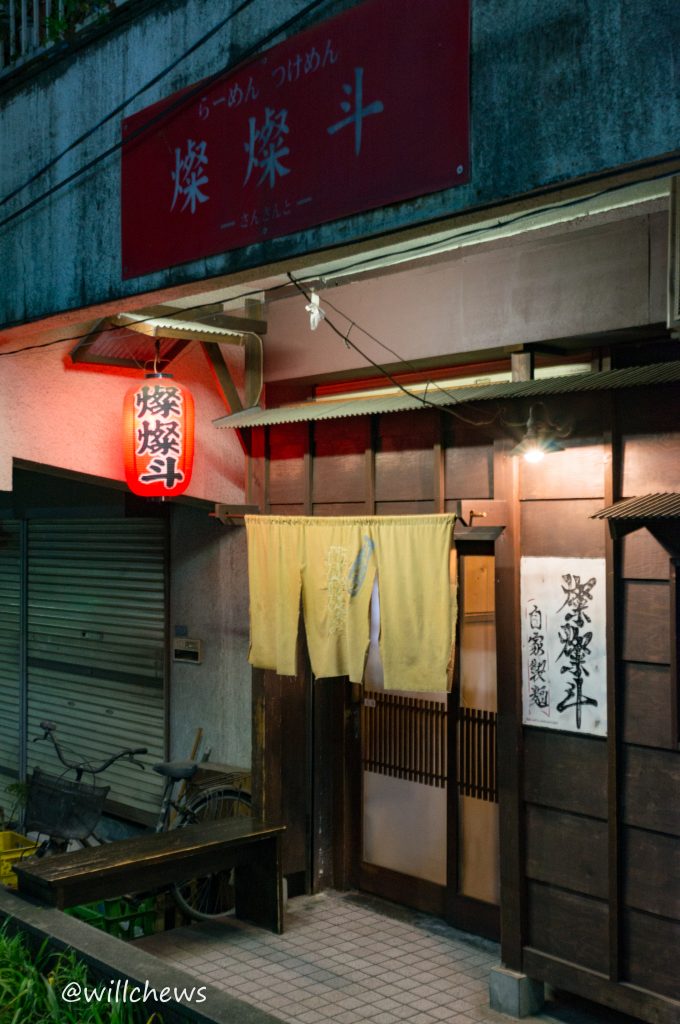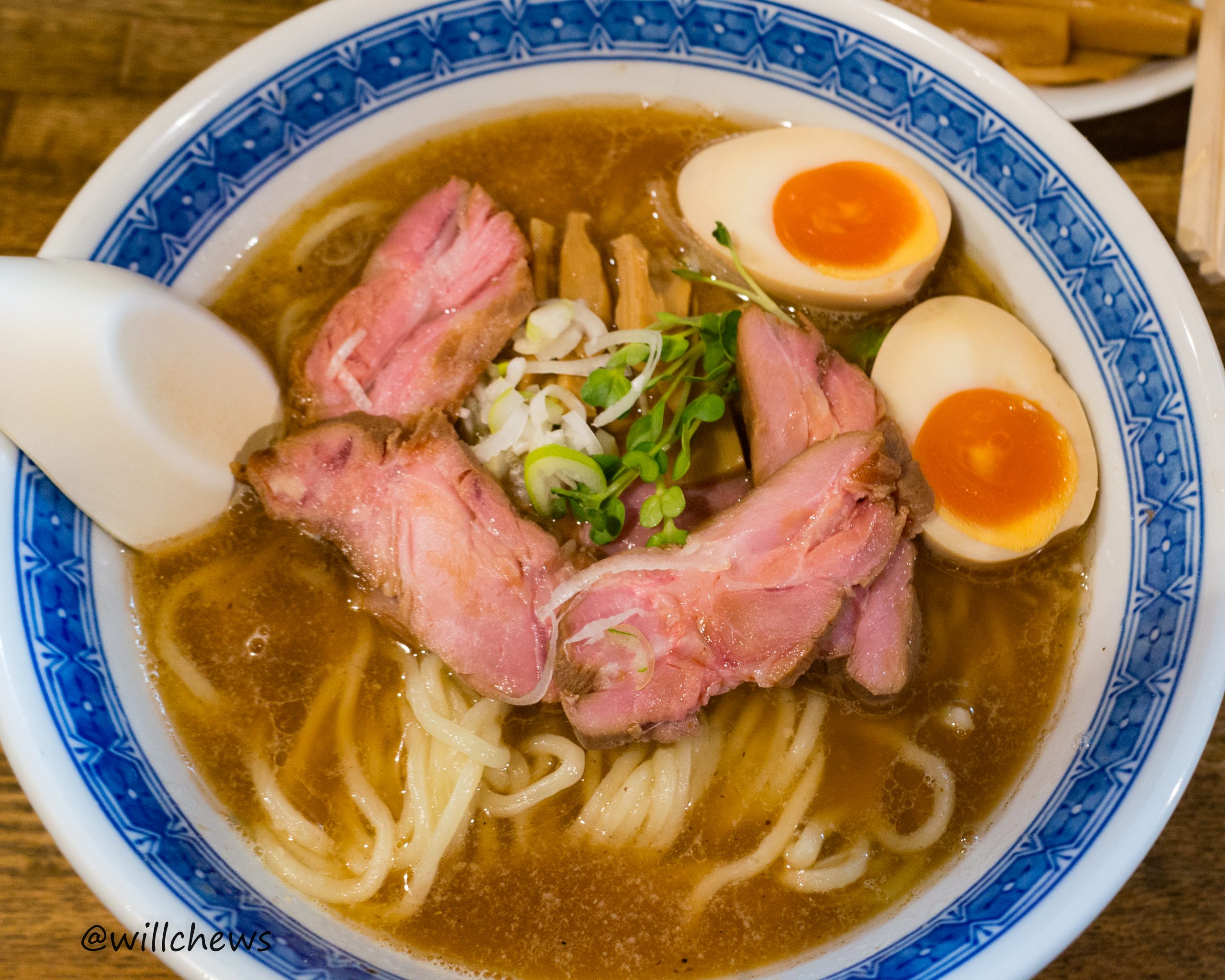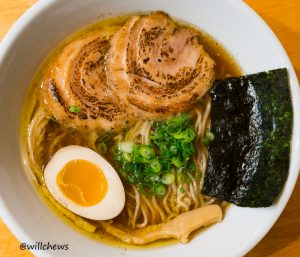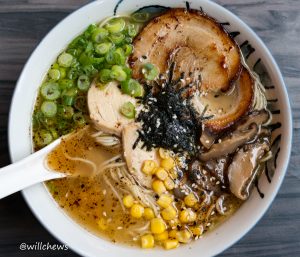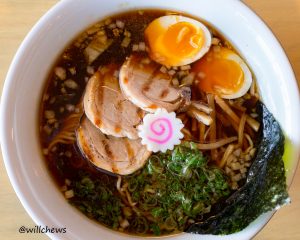Tokyo’s Kita ward is the best-kept secret among Tokyo’s ramen aficionados. While much of the ramen and tourist foot-traffic flow towards Shinjuku, Shibuya, Asakusa, and other tourist hotspots, there’s not much to see in Kita ward: mostly a mix of old
danchi (団地, public housing apartment blocks) and some
shitamchi neighborhoods (下町, literally “downtown,” but really old-town, Showa-era Tokyo). Yet it is the site of three Tier 1 ramen shops:
Honda, Chukasoba Ito, and my favorite ramen shop in the world, Sansanto.
According
Senga Yusuke’s blog, the owner is Goto Takeshi, a former salaryman who left to start his own business. While retired salarymen embarking on second careers as soba noodle shop owners is a well-worn path, Goto instead went to ramen-making school and started Sananto with his wife at least 14 years ago. Located in an almost-hidden alley off the pedestrian bridge from Higashi-Jujo Station, the shop is only open for 2.5 hours a day for five days a week. As Goto makes the broth, chashu, and the noodles himself, he is unable to open much more than that. As one steps through the
noren into the shop, one is greeted by his wife’s sing-song voice and a very snug, old-school Japanese restaurant interior. (
Aside: Since my last visit in 2016, I could swear they’ve added an extra seat to the counter; surely it’s not my waistline)
Future Sansanto reviews will address the other bowls, but this one will only discuss Sansanto’s flagship
tonkotsu-gyokai ramen, which the participants of
Ramen DB have rated as the fourth-best bowl of that style. The broth is excellent, offering a wonderful three-way balance between pork, chicken, and seafood flavors, the latter of which includes dried mackerel and niboshi, according to Senga-san. Surprisingly for a tonkotu-gyokai, the broth is
assari rather than
kotteri in makeup; obviously a slow-cooked broth, this may be the most light-bodied tonkotsu-gyokai I’ve ever had. The menma is thick-cut and chewy, and the ajitama egg is faultless. So far, so good.
But the true superlatives of this bowl are the chashu and the noodles. The chashu is slow-roasted fatty loin that is served rare, pink, chewy, and full of incredibly deep flavors. It’s easily a top-3 or 5 chashu in my book. The hand-rolled, medium-thick noodles are perhaps an even greater surprise: the noodles contain relatively high water content, which makes them both chewy and “sticky.” Of course the broth negates some of that stickiness, but in return the noodle is able to scoop up the broth and
komiabura as it starts the irresistible journey down one’s gullet. The overall texture is not unlike mochi, as Senga correctly points out. All I can say is that it’s terrifically easy to eat, one of the few noodles I’ve had that I want more of on its own merits, not simply because I’m hungry or because I have too much broth or chashu left. It’s also worth noting that in recognition of his terrific noodles, Goto-san provides 200g of noodle in a regular order when most shops offer 140-150g, and one can upgrade to 330g of noodles for just 100 yen more.
